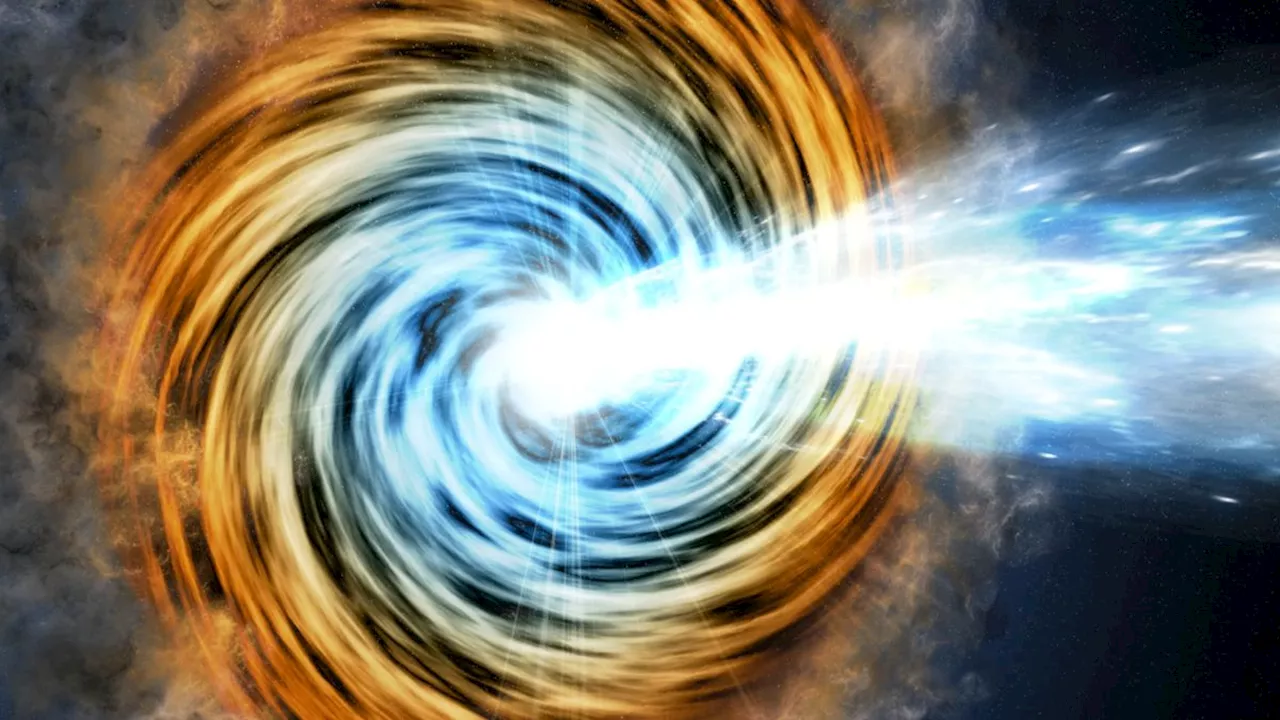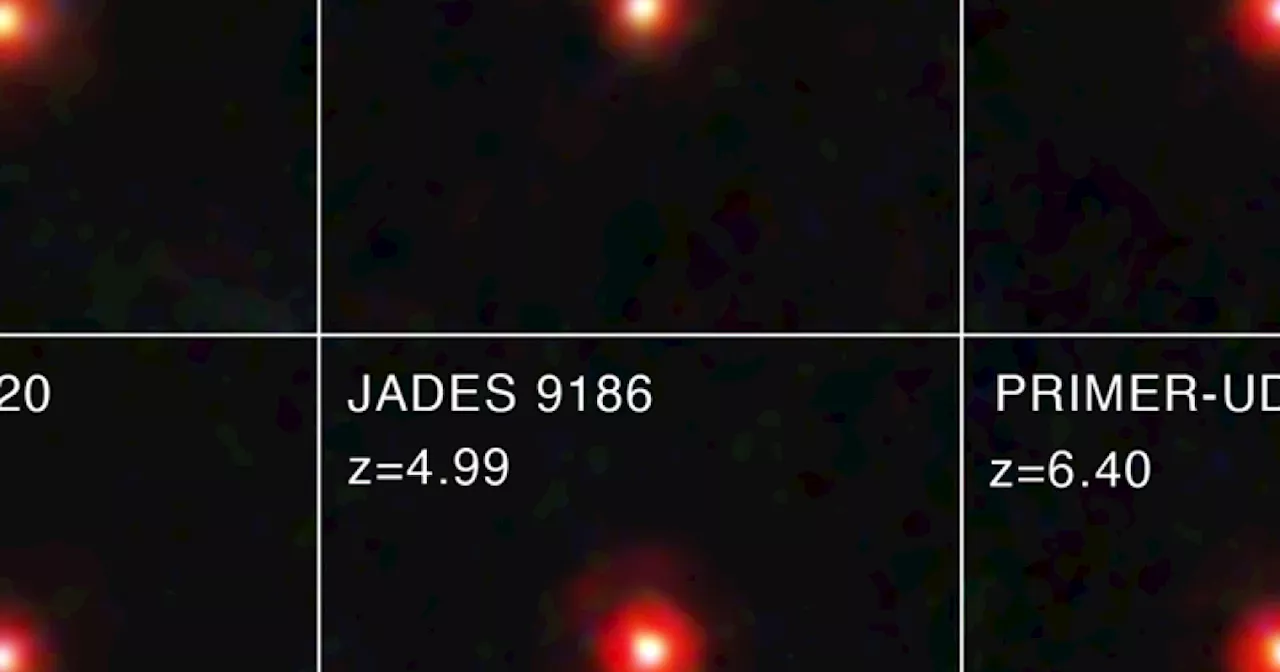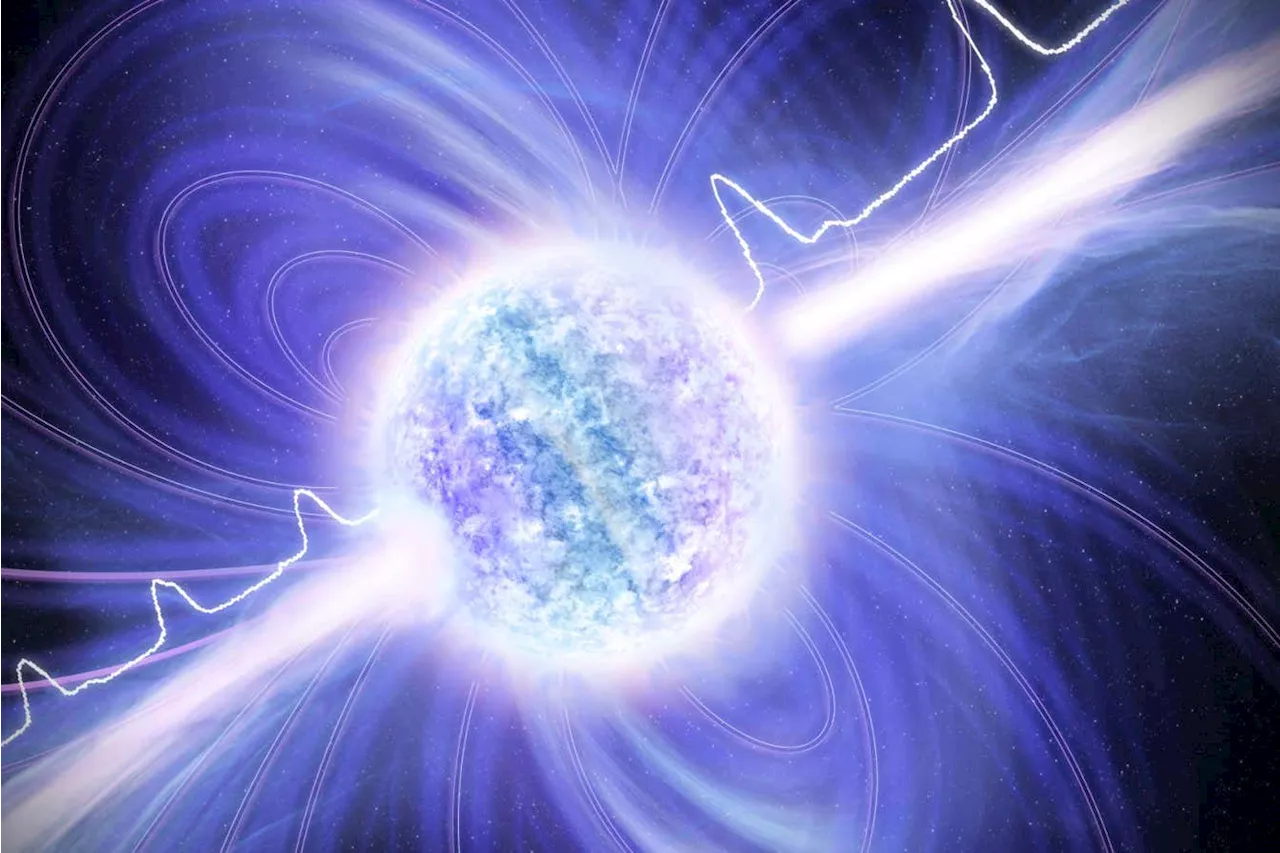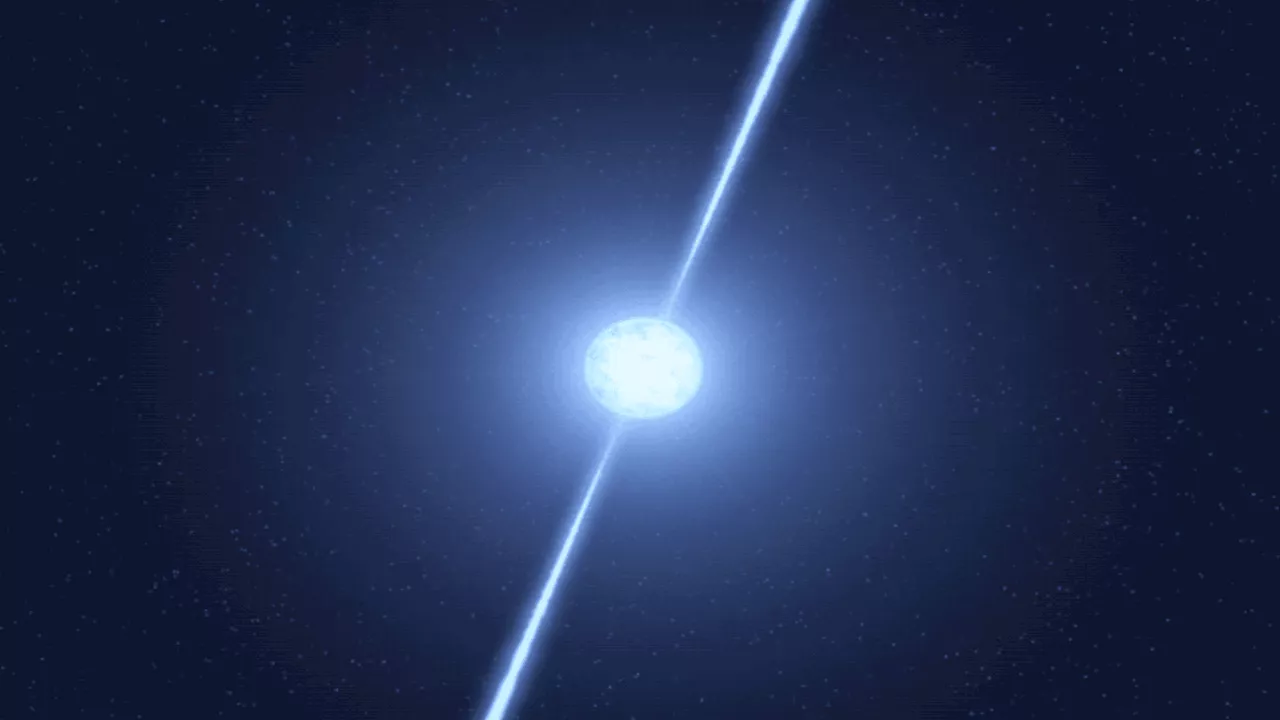A team of astronomers led by Guðmundur Stefánsson have discovered Gaia-4b, a massive exoplanet orbiting a relatively low-mass star. The discovery was made using the astrometric method, which involves tracking the wobbling motion of a star caused by the gravitational pull of an orbiting companion. Gaia-4b's mass is 11.8 times that of Jupiter, raising questions about its classification as either a planet or a brown dwarf.
Astronomers have discovered one of the largest exoplanets orbiting a relatively low-mass star, thanks to the gravitational influence of the planet on its host star. This massive exoplanet, named Gaia-4b, was detected using the astrometric method , where astronomers track the slight wobbling motion of a star caused by the gravitational pull of an orbiting companion.
Using the Gaia spacecraft and ground-based telescopes, a team led by Guðmundur Stefánsson of the University of Amsterdam, confirmed the presence of Gaia-4b. The exoplanet has a remarkable orbital period of 570 days, classifying it as a relatively cold gas giant. Despite its distance from its star, Gaia-4b's immense size exerts a significant gravitational pull, causing the star to wobble noticeably in its path across the sky. This wobbling motion, resembling a corkscrew pattern, was observed by Gaia and prompted further investigation by Stefánsson's team.To confirm the presence of a planet and determine its characteristics, the team employed a trio of spectrographs: NEID at Kitt Peak National Observatory, the Habitable-zone Planet Finder at McDonald Observatory, and FIES on the Nordic Optical Telescope. These instruments measured the radial velocity of the star, revealing the extent to which it wobbles on its axis due to the gravitational pull of its orbiting companion. The data indicated that Gaia-4b's mass is 11.8 times that of Jupiter, raising questions about its classification. While its mass places it within the planetary realm, the abundance of heavy elements in the star's composition suggests a possible alternative origin. Stefánsson's team proposes that Gaia-4b may have formed through gravitational collapse, similar to the formation of brown dwarfs. However, the precise nature of Gaia-4b's formation remains an open question, with astronomers continuing to analyze data from the Gaia mission to shed further light on this intriguing exoplanet
Exoplanet Gaia-4B Astrometric Method Radial Velocity Brown Dwarf Planetary Formation
United States Latest News, United States Headlines
Similar News:You can also read news stories similar to this one that we have collected from other news sources.
 Astronomers Discover Most Distant Blazar Ever, Peering into Early UniverseA team of astronomers has identified the most distant blazar yet, a supermassive black hole emitting a powerful energy beam directly towards Earth. The discovery provides a unique window into the early universe and offers insights into the formation and evolution of supermassive black holes.
Astronomers Discover Most Distant Blazar Ever, Peering into Early UniverseA team of astronomers has identified the most distant blazar yet, a supermassive black hole emitting a powerful energy beam directly towards Earth. The discovery provides a unique window into the early universe and offers insights into the formation and evolution of supermassive black holes.
Read more »
 Astronomers Discover 'String of Cosmic Pearls' - A Rare Aligned Group of Dwarf GalaxiesAstronomers have found a unique grouping of five dwarf galaxies positioned in a nearly perfect alignment, resembling a string of pearls in the sky. This rare arrangement, located about 117 million light-years away, presents a challenge to our current understanding of cosmic evolution. The galaxies, designated D1 to D5, exhibit active star formation and engage in gravitational interactions, including a cosmic 'tug of war' that pulls gas and stars between them. This discovery raises questions about the formation and evolution of these galaxies and their alignment.
Astronomers Discover 'String of Cosmic Pearls' - A Rare Aligned Group of Dwarf GalaxiesAstronomers have found a unique grouping of five dwarf galaxies positioned in a nearly perfect alignment, resembling a string of pearls in the sky. This rare arrangement, located about 117 million light-years away, presents a challenge to our current understanding of cosmic evolution. The galaxies, designated D1 to D5, exhibit active star formation and engage in gravitational interactions, including a cosmic 'tug of war' that pulls gas and stars between them. This discovery raises questions about the formation and evolution of these galaxies and their alignment.
Read more »
 Astronomers Discover Cosmic 'Little Red Dots' May Be Early GalaxiesA team of astronomers analyzing data from the James Webb Space Telescope (JWST) has identified a large number of 'little red dots,' compact reddish objects in the early universe. These dots appear to be transient, existing mainly a billion years after the Big Bang and then fading away. Further analysis suggests they could be actively growing supermassive black holes, potentially forming the cores of today's massive galaxies.
Astronomers Discover Cosmic 'Little Red Dots' May Be Early GalaxiesA team of astronomers analyzing data from the James Webb Space Telescope (JWST) has identified a large number of 'little red dots,' compact reddish objects in the early universe. These dots appear to be transient, existing mainly a billion years after the Big Bang and then fading away. Further analysis suggests they could be actively growing supermassive black holes, potentially forming the cores of today's massive galaxies.
Read more »
 Astronomers Discover 'Zombie Star' Pulsating at Unprecedented Slow RateA newly discovered collapsed star, nicknamed a 'zombie star,' challenges our understanding of pulsars by emitting radio waves at an astonishingly slow rate. Located 13,000 light-years away, this object rotates once every 6.45 hours, defying the conventional belief that pulsars cease emitting radio waves when their rotation slows down significantly. Astronomers are baffled by this discovery and are exploring the possibility that it represents a new type of pulsar.
Astronomers Discover 'Zombie Star' Pulsating at Unprecedented Slow RateA newly discovered collapsed star, nicknamed a 'zombie star,' challenges our understanding of pulsars by emitting radio waves at an astonishingly slow rate. Located 13,000 light-years away, this object rotates once every 6.45 hours, defying the conventional belief that pulsars cease emitting radio waves when their rotation slows down significantly. Astronomers are baffled by this discovery and are exploring the possibility that it represents a new type of pulsar.
Read more »
 Sloth of the Skies: Astronomers Discover the Slowest Spinning PulsarScientists at the University of Sydney have identified a new type of neutron star that rotates incredibly slowly, taking 6.45 hours to complete one rotation. This discovery challenges conventional understanding of pulsars, which are typically known for their rapid spinning. ASKAP J1839-075, as this peculiar neutron star is called, emits radio waves at a pace never before observed, potentially rewriting our knowledge about stars.
Sloth of the Skies: Astronomers Discover the Slowest Spinning PulsarScientists at the University of Sydney have identified a new type of neutron star that rotates incredibly slowly, taking 6.45 hours to complete one rotation. This discovery challenges conventional understanding of pulsars, which are typically known for their rapid spinning. ASKAP J1839-075, as this peculiar neutron star is called, emits radio waves at a pace never before observed, potentially rewriting our knowledge about stars.
Read more »
 Astronomers Discover Fastest Jet Stream Ever Recorded on an ExoplanetAstronomers using the European Southern Observatory's Very Large Telescope have detected extremely powerful winds on WASP-127b, a giant exoplanet. These supersonic winds, reaching speeds up to 33,000 km/h, are the fastest jet stream ever measured on a planet, providing unique insights into the weather patterns of a distant world.
Astronomers Discover Fastest Jet Stream Ever Recorded on an ExoplanetAstronomers using the European Southern Observatory's Very Large Telescope have detected extremely powerful winds on WASP-127b, a giant exoplanet. These supersonic winds, reaching speeds up to 33,000 km/h, are the fastest jet stream ever measured on a planet, providing unique insights into the weather patterns of a distant world.
Read more »
